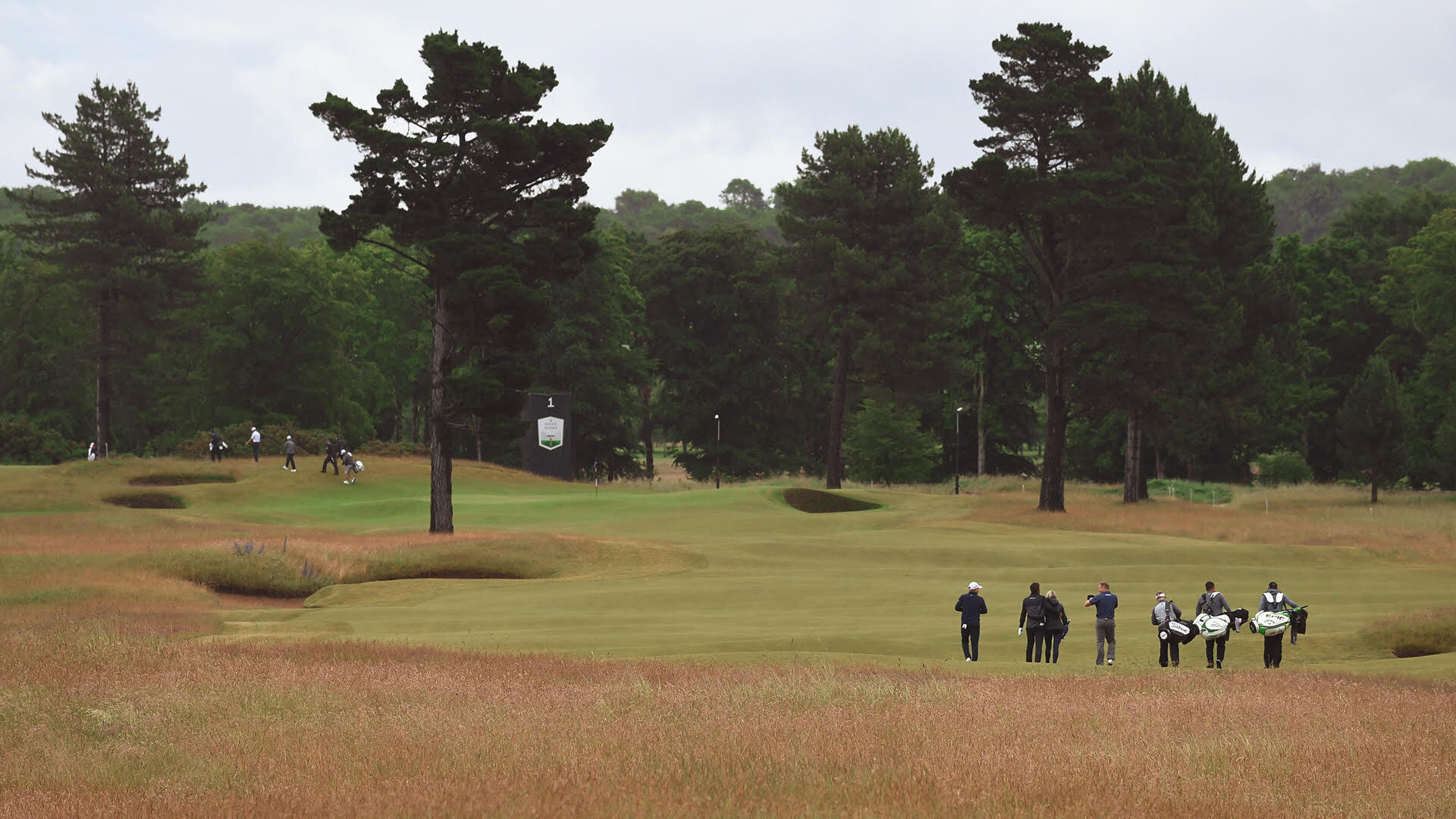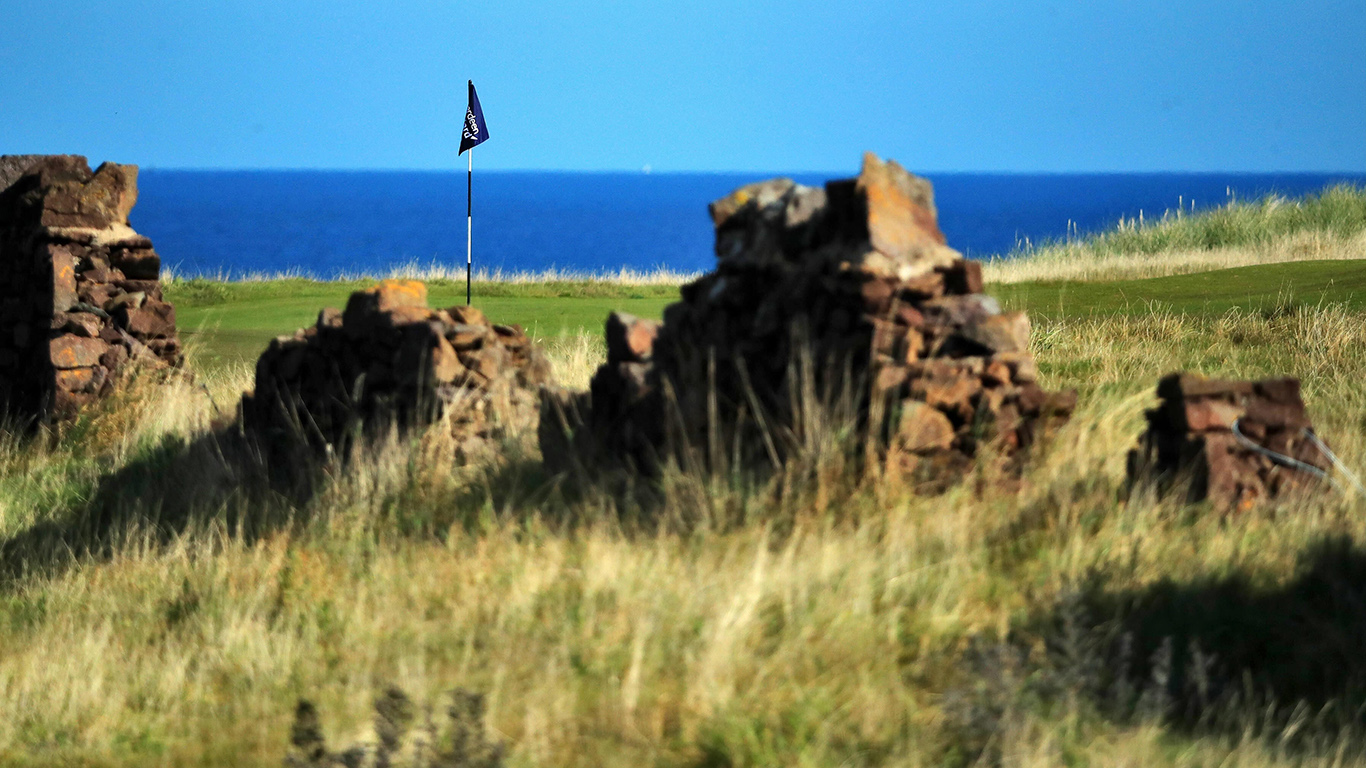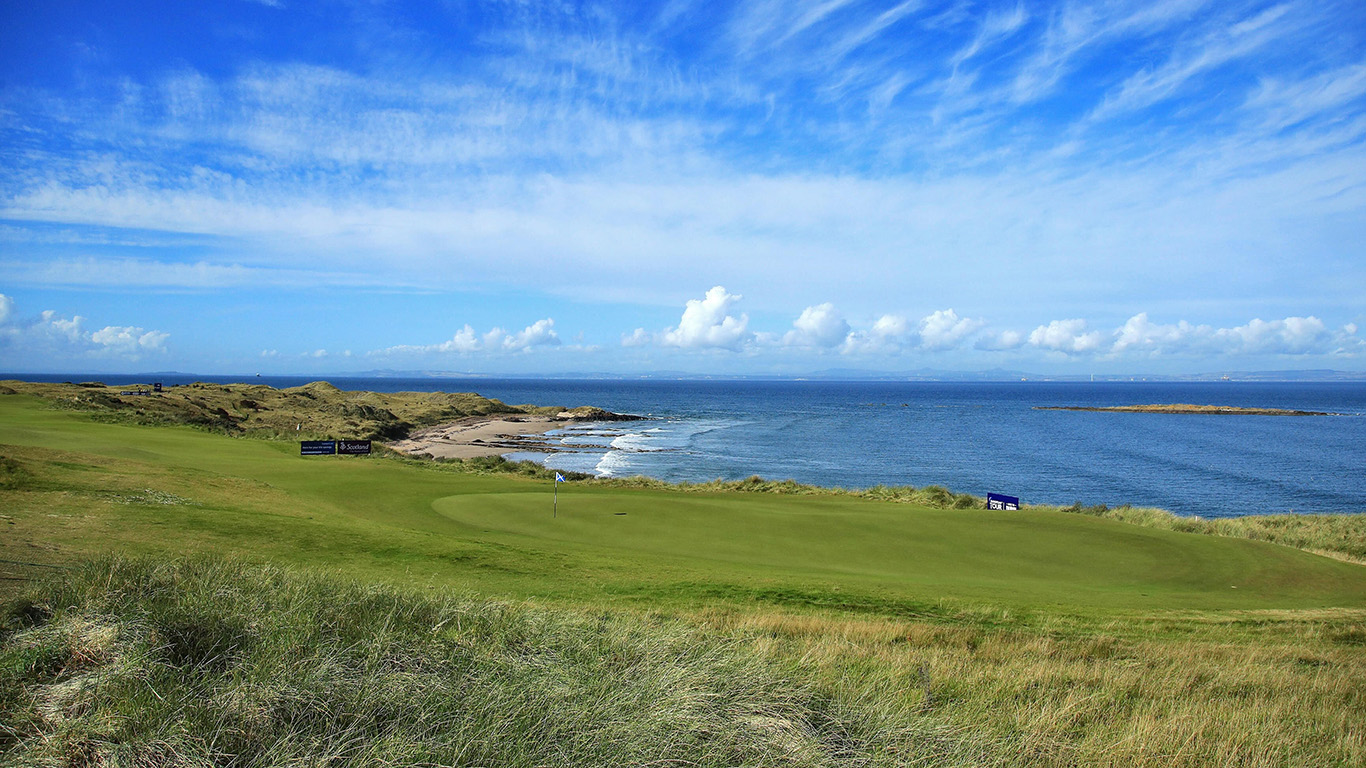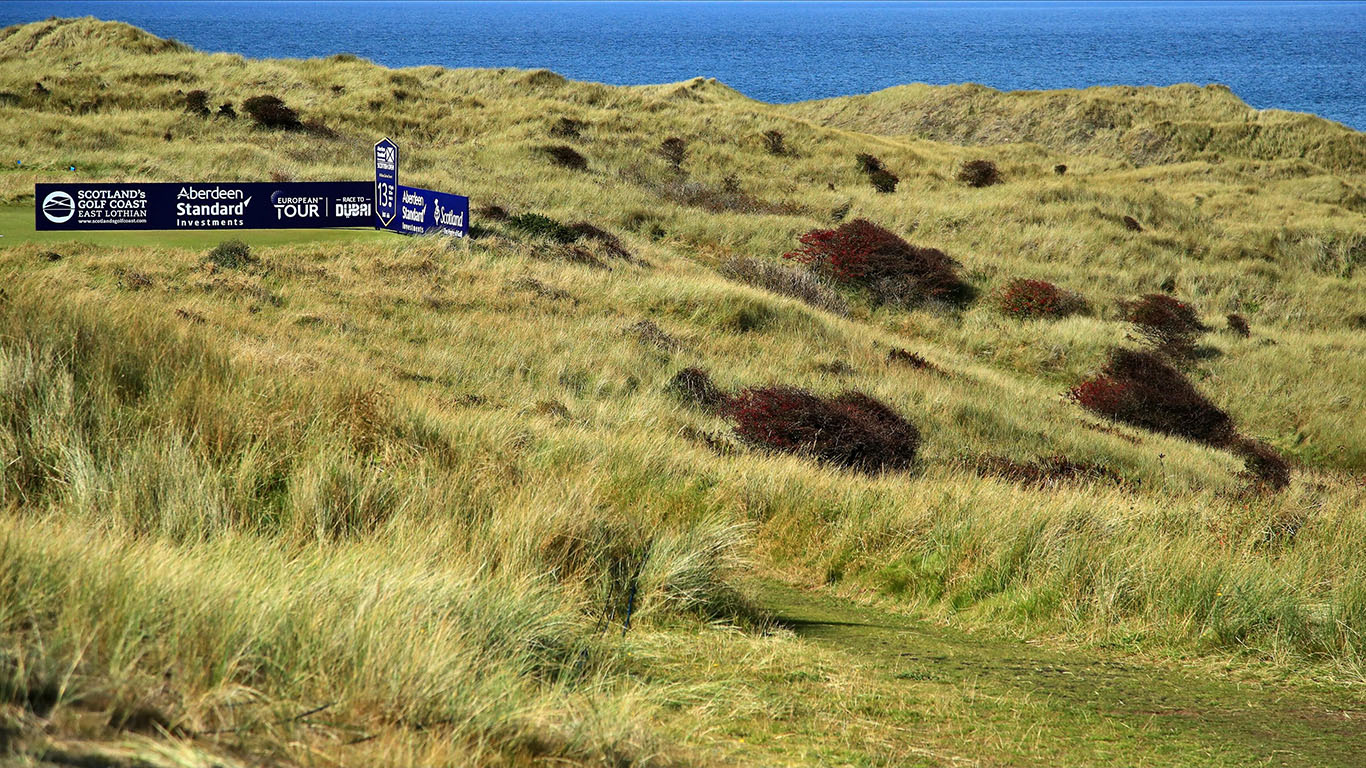This week on the European Tour, the Renaissance Club is hosting the Scottish Open for the third straight time. The course—located in the golf mecca that is North Berwick, Scotland—was built in 2008 by Tom Doak and revised substantially in 2014.
Two years ago, just before the Renaissance Club hosted the Scottish Open for the first time, I sat down with Doak to discuss the challenge of building a new course in the same neighborhood as Muirfield and North Berwick, his favorite holes on the property, and the reason he was able to add a spectacular seaside stretch five years into the Renaissance Club’s life.
(In episode 15 of the Yolk with Doak, our discussion of the Renaissance Club starts at 29:08. The transcript below has been lightly edited for clarity.)
How was it building a new golf course in Scotland? Is there more pressure on doing something there as opposed to in America?
Tom Doak: I never really looked at it that way, but I have to admit—and I haven’t said this in any of the promo stuff for the tournament that I’ve been helping with—I have to admit that when they first contacted me about doing that project, it took them a while to convince me to want to do it. The main reason was that we just got done doing Pacific Dunes, Cape Kidnappers, and Barnbougle, and they were all super dramatic pieces of land. Then the site for Renaissance Club is between Muirfield and North Berwick. Muirfield is right over the wall, right next door. And North Berwick is two or three miles down the coast. Two of my favorite golf courses in Scotland, and two of the prettiest golf courses in Scotland.
What we started with at the Renaissance Club was not dramatic land at all. I mean, eventually we got permission to build a couple of holes out in the more dramatic land, but when we started we couldn’t even do that. I thought that no matter what we did, it would be a disappointment because the land wasn’t really dramatic, and we weren’t going to try to do the Kingsbarns thing of building stuff up and down 10 feet to make it feel like it was right on the water. That wouldn’t have worked the same way there at all, and I didn’t want to do something like that. To me, that’s too artificial for Scotland, and they would hate it.
In the end, the only thing that did convince me to take the job was that the Scots would not care about the visual part. They just wanted to see us build a good golf course that really played like a links, and there were a bunch of good holes. They would accept that as a really good golf course, and that was sort of liberating when I finally thought about that. I knew it wasn’t going to be the golf course that my friends in the States talked about the same way they talk about Cape Kidnappers. That’s okay. You don’t get sites like that very often. I understand that.

The 1st hole (Scottish Open layout) at the Renaissance Club. Photo: Ru Macdonald
I think the Renaissance Club turned out really well. That’s one of the best playing surfaces I’ve ever been on.
Was it always meant to be a tournament course?
Doak: It’s a bunch of brothers who developed the golf course, Americans. And Jerry Sarvadi, who’s kind of the managing partner, lives over there. Before that, he lived in Ponte Vedra, and he used to play golf with the guys from the PGA Tour at Pablo Creek all the time. And then one of his brothers, Paul Sarvadi—his company Insperity used to be the sponsor of the senior tour event in Houston.
So they both had a lot of connections with the Tour, and from the beginning they wanted the golf course to be a tournament venue. And it was the first course where I’d done that. That’s what they wanted from the start, but it’s taken them years to get over the hump of an American-built private course hosting an event in Scotland. There was just a natural, “No, we can’t do it.”
I mean, Mark Parsinen had had it at Castle Stuart, but that was a resort-slash-public course, so no problem. But because these guys have a private club [at Renaissance], there was a bunch of resistance to that. So they had it at Gullane instead. They had it at Royal Aberdeen instead, and the Sarvadis had been pitching for it for years. And finally, I think they made some kind of accommodation to let more Scottish people or British people play there. That was the turning point to, “Okay, then you can have the tournament, too.”
What are some of your favorite holes?
Doak: The most dramatic holes are the stretch of 7, 8, 9, 10 [10, 11, 12, 13 in the Scottish Open] going out to the coast. That’s a beautiful stretch of golf.
The 7th hole [10 in the tournament] is a par 5 that’s in the trees a little bit, but a really cool short par 5 if you’re trying to go for it, and the green is just perched on the back side of a dune ridge. So the angle of approach is really important, and you almost can’t get yourself to the right angle off the tee. You’ve got to hit a fade in there to hold the green very well.
Then the 8th hole [11 in the tournament] is a super long par 4. It usually plays downwind there, but 25% of the time the wind will be dead into players’ faces, and if they’re playing in those conditions, even the tour pros will have trouble getting there in two. It’s 510 into the wind with a really wild green tucked in between a dune on the left and this broken-down end of an old stone wall to the right. It’s not right up against the green, but it’s close enough that you’re worried you’re going to tangle with it. Beautiful setting.

A rock wall on the 14th hole (Scottish Open layout) at the Renaissance Club. Photo: Ru Macdonald
The 9th hole [12 in the tournament] is a par 3 where you walk toward the green and all of a sudden you’re kind of coming around the corner and the Fidra Island and the lighthouse come into view. And it’s spectacular.
Then you have to walk back in between all the patches of dunegrass and moss that they didn’t want us to touch to get to the back tee of the 10th hole, which will be the 13th hole for the tournament. But it’s a Cape hole playing along a cliff, just above the beach, looking over at the lighthouse. And it’s like, I honestly can’t believe they let me build a golf hole there.

The 13th hole (Scottish Open layout) at the Renaissance Club. Photo: Ru Macdonald
So those holes you’re talking about weren’t actually part of the course at the beginning. What’s the story behind building a batch of new holes just five years after opening?
Doak: When the Sarvadis first got involved with the property, there was a planning application already in progress to make a golf course out of it. They actually didn’t buy the land; they’re leasing it from the estate of the Duke of Hamilton.
The Duke owned right up to the stone wall along Muirfield, and Muirfield was a little nervous about an American neighbor being that close. There are trees on our side of the wall, but for all Muirfield knew, we’d knock down all the trees and build a hole right there and wave at the members of Muirfield, and they really didn’t want that to happen. Obviously my client wasn’t going to do that, but Muirfield still asked, “Can we trade you some property? Will you just give us that strip of trees along our wall?” So they created a buffer, and for the 2013 Open Championship, Muirfield actually put the 9th tee back on some of the property they swapped with us. And for that, they gave us some land in the dunes on the very point of the property. Those are some of the prettiest views you’ve ever seen.

The 13th tee (Scottish Open layout) at the Renaissance Club. Photo: Ru Macdonald
Muirfield actually owns another 200 acres of dunes along the water. It’s an unbelievable piece of land for a golf course, but they would probably never get planning permission to do it. The formation of dunes is considered important and distinctive, so you couldn’t just bulldoze it.
Photos by Ru Macdonald (@RuMacdonald), host of the Scottish Golf Podcast


 by
by 
